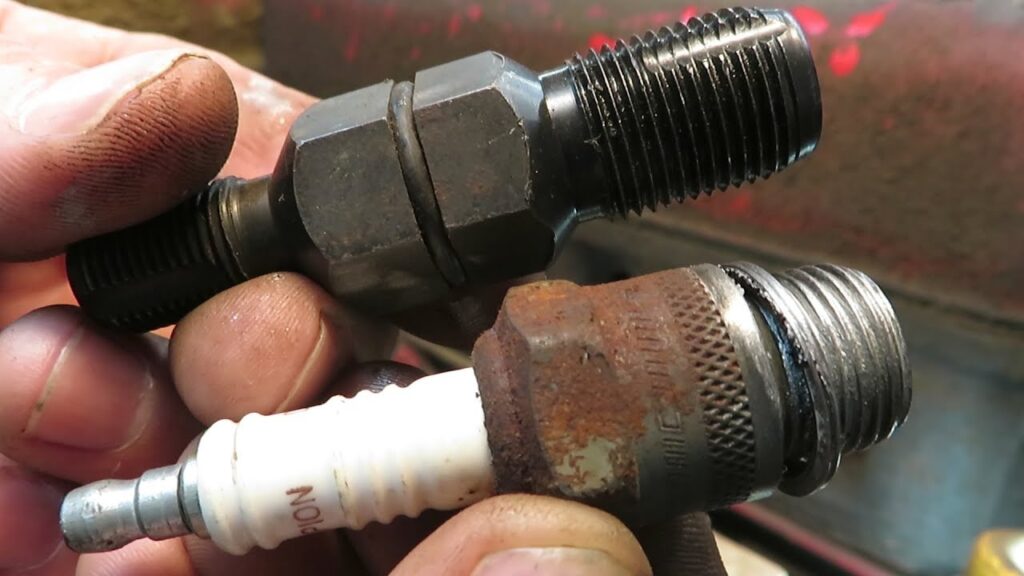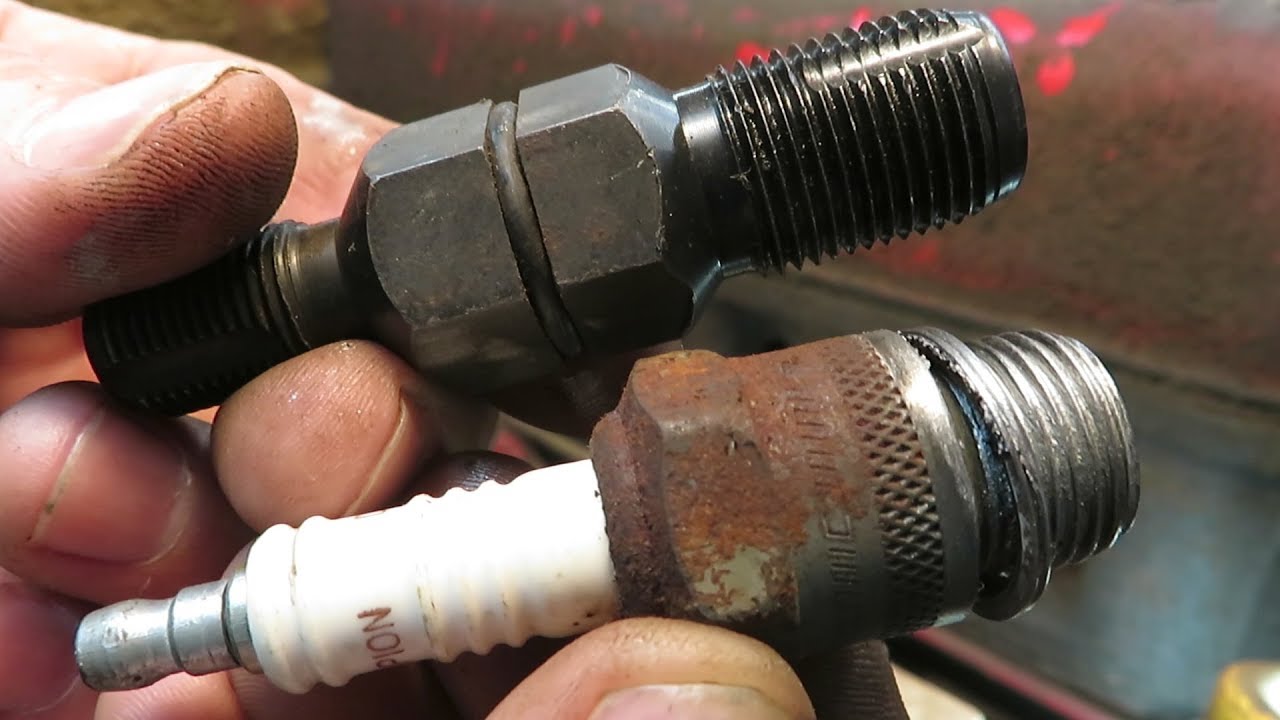
Spark Plug Cross Threaded: Causes, Prevention, and Repair
A spark plug cross threaded is a frustrating and potentially costly problem for any vehicle owner. When a spark plug is cross threaded, it means the threads of the spark plug and the cylinder head are misaligned, causing damage and preventing a proper seal. This article will delve into the causes of spark plug cross threading, methods for prevention, and repair options, ensuring you’re well-equipped to handle this issue. Understanding the intricacies of spark plug installation is crucial to avoid this common pitfall.
Understanding Spark Plug Threads
Before diving into the specifics of cross threading, it’s essential to understand the basics of spark plug threads. Spark plugs have precisely cut threads designed to mate perfectly with the threads in the cylinder head. These threads are vital for ensuring a tight seal, which is necessary for optimal engine performance. A proper seal prevents combustion gases from escaping and ensures efficient heat transfer from the spark plug to the cylinder head. When the threads are damaged due to cross threading, this seal is compromised.
Causes of Spark Plug Cross Threading
Several factors can contribute to a spark plug cross threaded scenario. Identifying these causes is the first step in preventing the problem.
Improper Installation
The most common cause is improper installation. This typically occurs when the spark plug is not started correctly, and force is applied before the threads are properly aligned. Rushing the installation process or using excessive force can easily lead to cross threading. Always take your time and ensure the spark plug is correctly aligned before tightening.
Dirty or Damaged Threads
Another potential cause is dirty or damaged threads in either the cylinder head or on the spark plug itself. Debris, rust, or pre-existing damage can prevent the spark plug from threading smoothly. Always clean the threads in the cylinder head before installing a new spark plug. A thread chaser can be used to clean and lightly reform damaged threads.
Using the Wrong Spark Plug
Using the wrong type of spark plug for your vehicle can also lead to problems. Different engines require specific types of spark plugs with varying thread sizes and lengths. Using an incorrect spark plug can force the threads and cause damage, resulting in a spark plug cross threaded issue.
Over-Tightening
While not directly cross threading, over-tightening a spark plug can damage the threads and make future removal and installation difficult, increasing the risk of cross threading later on. Always use a torque wrench to tighten spark plugs to the manufacturer’s specified torque.
Preventing Spark Plug Cross Threading
Prevention is always better than cure. Here are some essential tips to prevent a spark plug cross threaded situation.
Start by Hand
Always start the spark plug by hand. This allows you to feel if the threads are aligning correctly. If you encounter resistance, stop and re-align the spark plug. Never force the spark plug in; it should thread smoothly with minimal effort.
Use a Spark Plug Socket with a Rubber Insert
A spark plug socket with a rubber insert helps to hold the spark plug straight during installation. This ensures the spark plug is aligned correctly with the threads in the cylinder head, reducing the risk of cross threading.
Clean the Threads
Before installing a new spark plug, clean the threads in the cylinder head. You can use a thread chaser or a specialized cleaning tool to remove any debris or rust. This ensures a smooth and accurate installation.
Apply Anti-Seize Compound
Applying a small amount of anti-seize compound to the spark plug threads can help prevent them from seizing in the cylinder head. This makes future removal easier and reduces the risk of damage. However, be cautious not to over-apply, as this can affect the torque reading.
Use a Torque Wrench
Always use a torque wrench to tighten the spark plugs to the manufacturer’s specified torque. Over-tightening can damage the threads, while under-tightening can lead to leaks and poor engine performance. A torque wrench ensures the spark plug is tightened correctly.
Recognizing a Cross Threaded Spark Plug
Identifying a spark plug cross threaded early can save you from more extensive damage. Here are some signs to look out for:
- Resistance when installing the spark plug.
- The spark plug does not tighten fully.
- Unusual noises during installation.
- Visible damage to the threads on the spark plug or in the cylinder head.
If you notice any of these signs, stop immediately and inspect the threads. Forcing the spark plug will only worsen the damage.
Repairing a Spark Plug Cross Threaded
If you’ve discovered a spark plug cross threaded, you have several repair options, depending on the severity of the damage.
Thread Chasing
If the damage is minor, you might be able to repair the threads using a thread chaser. A thread chaser is a specialized tool designed to clean and lightly reform damaged threads. It’s less aggressive than a tap and can often restore the threads to a usable condition. [See also: Using Thread Repair Kits].
Thread Repair Kit (Heli-Coil)
For more significant damage, a thread repair kit, such as a Heli-Coil, might be necessary. These kits involve drilling out the damaged threads and installing a new threaded insert. This provides a new, undamaged surface for the spark plug to thread into. Heli-Coil kits are a common and effective solution for repairing spark plug cross threaded issues.
Oversized Spark Plug
Another option is to use an oversized spark plug. These spark plugs have a slightly larger diameter and can be used to tap new threads into the cylinder head. However, this method is not always recommended, as it can weaken the cylinder head and may not provide a long-term solution.
Cylinder Head Replacement
In severe cases, where the damage to the cylinder head is extensive, the only option might be to replace the cylinder head. This is the most expensive and time-consuming option, but it ensures the repair is done correctly and prevents future problems. [See also: Cylinder Head Maintenance].
Step-by-Step Guide to Using a Thread Repair Kit (Heli-Coil)
Here’s a detailed guide on how to use a thread repair kit to fix a spark plug cross threaded issue:
- Preparation: Gather all the necessary tools, including the thread repair kit, drill, tap, installation tool, and spark plug.
- Drilling: Use the drill bit provided in the kit to drill out the damaged threads in the cylinder head. Ensure you drill straight and to the correct depth.
- Tapping: Use the tap provided in the kit to create new threads in the cylinder head. Apply cutting oil to the tap and turn it slowly and evenly.
- Installing the Insert: Insert the Heli-Coil into the installation tool and thread it into the newly tapped hole. Follow the kit’s instructions for the correct installation depth.
- Breaking Off the Tang: Use the tang breaking tool to remove the tang from the Heli-Coil insert.
- Installing the Spark Plug: Install the spark plug by hand, ensuring it threads smoothly. Then, use a torque wrench to tighten it to the manufacturer’s specified torque.
Always refer to the specific instructions provided with your thread repair kit, as procedures can vary slightly depending on the manufacturer.
Cost of Repairing a Spark Plug Cross Threaded
The cost of repairing a spark plug cross threaded issue can vary widely depending on the repair method and whether you do it yourself or hire a professional mechanic.
- Thread Chasing: A thread chaser tool can cost between $20 and $50.
- Thread Repair Kit (Heli-Coil): A thread repair kit can cost between $50 and $150.
- Oversized Spark Plug: An oversized spark plug typically costs between $10 and $30.
- Cylinder Head Replacement: Replacing a cylinder head can cost anywhere from $500 to $2000 or more, including parts and labor.
- Professional Mechanic: Hiring a professional mechanic to repair a spark plug cross threaded can cost between $100 and $500, depending on the repair method and the mechanic’s labor rates.
Conclusion
Dealing with a spark plug cross threaded can be a headache, but understanding the causes, prevention methods, and repair options can help you tackle this issue effectively. Always take your time during spark plug installation, use the correct tools, and follow the manufacturer’s specifications. By doing so, you can avoid the frustration and expense of a spark plug cross threaded and keep your engine running smoothly. Remember to always prioritize prevention and address any signs of cross threading promptly to minimize damage. Taking preventative measures and understanding the repair options available can save you time, money, and unnecessary stress. [See also: Common Engine Problems].

